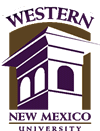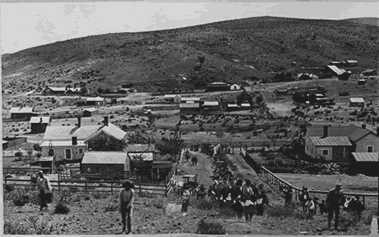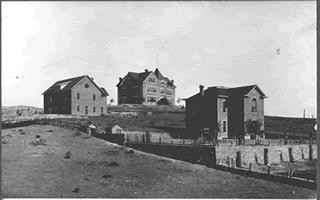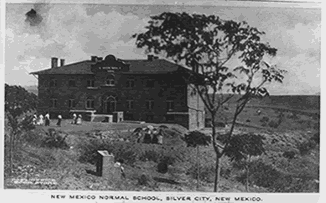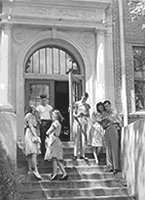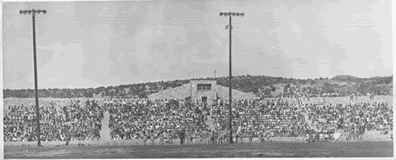"Although the frontier mining town of Silver City laid strong claims
to the School of Mines, she was rewarded with a School of Minds." -Silver
City Enterprise, 1899
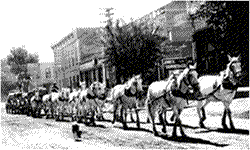 The
community of Silver City realized a longtime dream on February 11, 1893,
when the Thirtieth Session of the Territorial Legislature of New Mexico
passed "An Act to Establish and Provide for the Maintenance and Government
of the Normal Schools of New Mexico." Silver City and Las Vegas were
chosen to be the locations of these teacher-training The
community of Silver City realized a longtime dream on February 11, 1893,
when the Thirtieth Session of the Territorial Legislature of New Mexico
passed "An Act to Establish and Provide for the Maintenance and Government
of the Normal Schools of New Mexico." Silver City and Las Vegas were
chosen to be the locations of these teacher-training 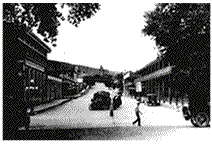 institutions.
This successfully culminated the efforts of many in Silver City, who
had attempted for years to convince the Territorial Legislature to approve
an institution of higher learning in Silver City. institutions.
This successfully culminated the efforts of many in Silver City, who
had attempted for years to convince the Territorial Legislature to approve
an institution of higher learning in Silver City.
|
Silver City speaks to you with a railroad
at either hand and another at her feet. Take the right hand railroad
For the Atlantic green...Or take a train for the South...An Old Mexico
will be seen. The left hand brings you To the Pacific blue And for the Normal School Silver City speaks to you. |
|
"May the work of these who may here instruct, as well as that of those who may here receive instruction, when tried by the Grand Master of Heaven and Earth, be like the cornerstone we have formed: true and trusty!" - Silver City Attorney A.H. Harlee
1894, September 14. Led by officials of the Grand Lodge of Mason, a large group of townspeople and officials ascended the hill and offically laid the cornerstone. John Harlan Photograph Collection
|
A Board of Regents, appointed by Governor L. Bradford Prince, was given the task of selecting a site for the school. On June 2, 1893, the Board accepted Regent John W. Fleming's offer of 20 acres situated on a high hill west of the community. This site allowed the institution to be visible to all who came into town. On September 7, 1894, an impressive dedication ceremony was held. Within the cornerstone laid by the officials and townspeople, a copper box containing coins, magazines, and other items of the period was placed. The military band of Fort Bayard provided appropriate music. |
|
The first director was George Selby, an educator from Deming, who was given the title of principal. He is remembered as the man who was given the difficult task of developing curricula and providing instruction for the first forty students. The first Normal
Catalog, prepared under the direction of Principal Selby for the 1895-1896
term, presented the mission statement of the school: The mission
of the Normal School is to supply the grammar schools of the territory
with competent and carefully trained teachers, devoted to their chosen
profession and conscious of its splendid possibilities. With the departure of Selby,
Charles M. Light became the principal. He later became the first to
be given the title of President. Professor Light, a Doctor of Pedagogy,
provided a needed air of stability for the young institution and presided
over substantial growth of the physical plant, faculty, and student
body. His tenure lasted until 1914.
circa 1904. Ritch Hall, women's dorm on the
|
|
It
was during 1917 that Fleming Hall was completed to house a gymnasium
and Science Department. Today this building is the home of the WNMU
Museum which was established in 1974. In the early 1920's the New Mexico
Normal School became New Mexico State Teachers' College. Following World
War I, Dotson Field was constructed and named after an alumnus who died
in the war.
Near the end of the 1920's, Light Hall was completed to serve as an auditorium, library and classroom facility. Although Graham Gymnasium was started years earlier, it was not completed until 1936. During the Depression of the 1930's there were numerous W.P.A. Projects which brought improvements to the campus.
1919. Summer school students on the campus of the
New Mexico Normal School. President's Office Collection
|
At the end of the 1930's a secondary school associated with the
college began operations in a new building on the east side of the
campus. Western High School was turned over to the Silver Consolidated
School District on July 1,1960. 1947. Students in front of Light Hall Entrance. Campus Collection |

1921, July 28. New Mexico Normal School Campus |
|
|
Although there was a delay in campus expansion during World War II, the influx of many veterans following the war made it necessary to bring temporary housing to the campus. The new housing was immediately dubbed Veterans' Dormitory. In 1948 a College Cafeteria replaced the cafeteria located in the basement of Ritch Hall. In 1949 the Mustang Field House and swimming pool were completed. In 1979 the wish for an enclosed pool was fulfilled.
In 1954 the President's home was completed. Miller Library, following
the razing of "Old Main,'' was built in 1957 then was completely remodeled
in 1997, doubling its size. In 1966 the Fine Arts Auditorium, the
McCray Art Building, and the Parotti Music building were finished.
These buildings have added cultural opportunities for the University
and local community. Western New Mexico University received its current
name in 1963. The Phelps Dodge-Felix Martinez Buildings (1970), Glaser
Hall (1981) and the Juan Chacon Building (1983) reflect the fulfillment
of more recent needs of the University. |
|
.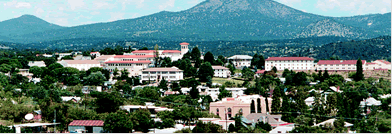 Enrollment
at WNMU reflects the national profile characterized by a high percentage
of nontraditional students. The student body numbers approximately 2500.
WNMU celebrated its 100th Anniversary in
1993. Exemplary teaching, quality programs, and enhanced regional service
characterize The
University Mission, as WNMU moves into its second one hundred years Enrollment
at WNMU reflects the national profile characterized by a high percentage
of nontraditional students. The student body numbers approximately 2500.
WNMU celebrated its 100th Anniversary in
1993. Exemplary teaching, quality programs, and enhanced regional service
characterize The
University Mission, as WNMU moves into its second one hundred years |
"We've spent 1993 acknowledging our accomplishments over the past 100 years. Now we look to the future with enthusiasm and confidence." -John E. Counts, President Western New Mexico University |
Western continues to overlook the community that gave it life. Change has been a integral part of its colorful history. However, with the elements of change there remain remnants of changelessness. Like warps, the vertical strings of a weaving, the constant dedication and rededication to excellence in higher learning remains firm.
